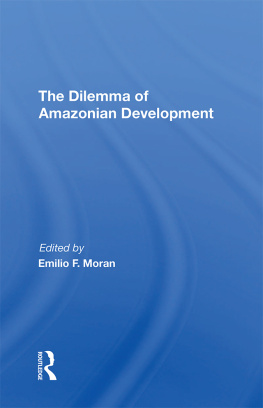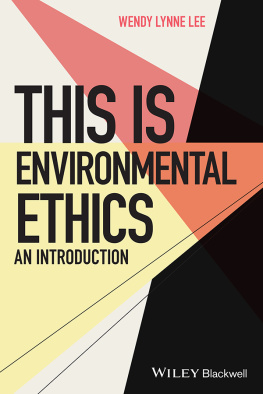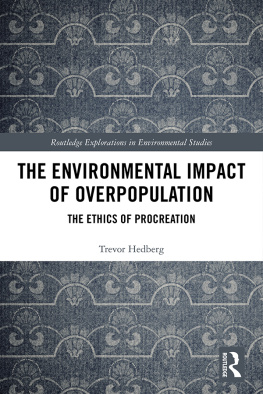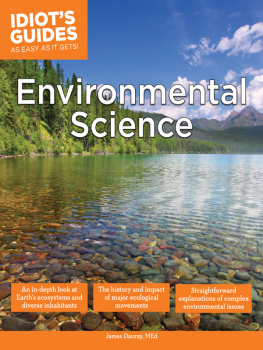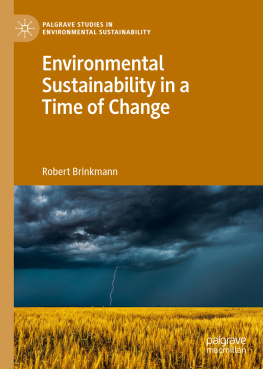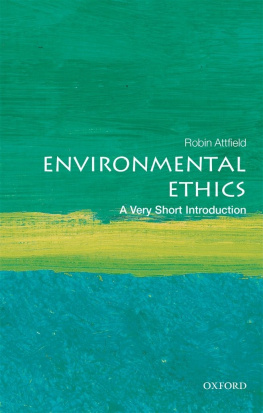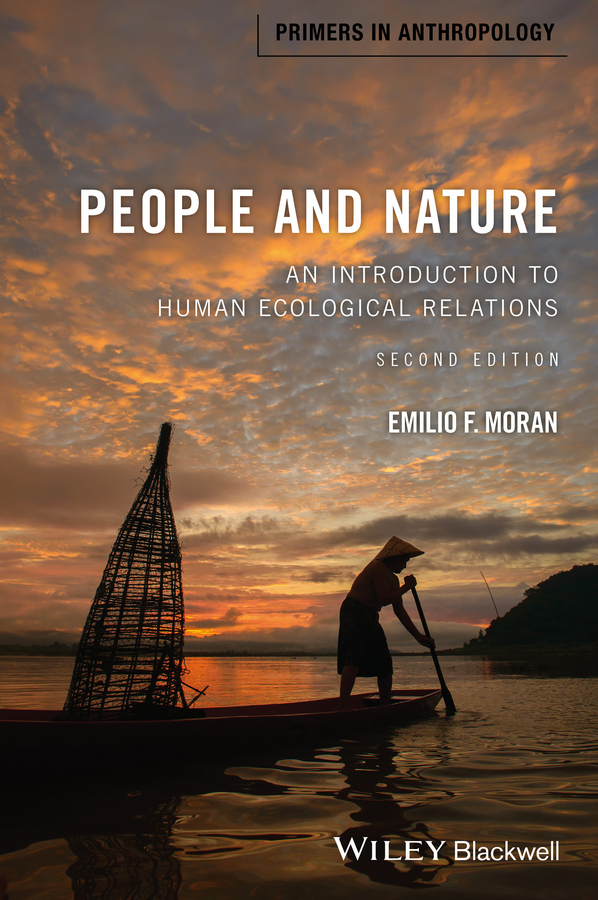
Table of Contents
List of Tables
- Chapter 02
- Chapter 04
List of Illustrations
- Chapter 01
- Chapter 02
- Chapter 03
- Chapter 04
- Chapter 05
- Chapter 06
- Chapter 08
- Chapter 09
Guide
Pages
Primers in Anthropology
Each volume in this series offers a lively take on a traditional area of anthropological study. Written explicitly for nonspecialists by top scholars, these concise books provide theoretically sophisticated yet accessible and engaging introductions. They will be invaluable to students and all those who seek pithy overviews on central topics.
Published
- People and Nature: An Introduction to Human Ecological Relations, Second Edition
Emilio F. Moran
- Living Language: An Introduction to Linguistic Anthropology, Second Edition
Laura M. Ahearn
People and Nature
An Introduction to Human Ecological Relations
Second Edition
Emilio F. Moran
This second edition first published 2017
2017 John Wiley & Sons, Inc.
Edition history: Blackwell Publishing Ltd (1e, 2006)
Registered Office
John Wiley & Sons, Ltd, The Atrium, Southern Gate, Chichester, West Sussex, PO19 8SQ, UK
Editorial Offices
350 Main Street, Malden, MA 021485020, USA
9600 Garsington Road, Oxford, OX4 2DQ, UK
The Atrium, Southern Gate, Chichester, West Sussex, PO19 8SQ, UK
For details of our global editorial offices, for customer services, and for information about how to apply for permission to reuse the copyright material in this book please see our website at www.wiley.com/wileyblackwell.
The right of Emilio F. Moran to be identified as the author of this work has been asserted in accordance with the UK Copyright, Designs and Patents Act 1988.
All rights reserved. No part of this publication may be reproduced, stored in a retrieval system, or transmitted, in any form or by any means, electronic, mechanical, photocopying, recording or otherwise, except as permitted by the UK Copyright, Designs and Patents Act 1988, without the prior permission of the publisher.
Wiley also publishes its books in a variety of electronic formats. Some content that appears in print may not be available in electronic books.
Designations used by companies to distinguish their products are often claimed as trademarks. All brand names and product names used in this book are trade names, service marks, trademarks or registered trademarks of their respective owners. The publisher is not associated with any product or vendor mentioned in this book.
Limit of Liability/Disclaimer of Warranty: While the publisher and author have used their best efforts in preparing this book, they make no representations or warranties with respect to the accuracy or completeness of the contents of this book and specifically disclaim any implied warranties of merchantability or fitness for a particular purpose. It is sold on the understanding that the publisher is not engaged in rendering professional services and neither the publisher nor the author shall be liable for damages arising herefrom. If professional advice or other expert assistance is required, the services of a competent professional should be sought.
Library of Congress CataloginginPublication Data
Names: Moran, Emilio F., author.
Title: People and nature : an introduction to human ecological relations / Emilio F. Moran.
Description: Second edition. | Chichester, West Sussex, UK : John Wiley & Sons, Inc., [2017] | Includes bibliographical references and index.
Identifiers: LCCN 2016016091| ISBN 9781118877470 (pbk.) | ISBN 9781118877319 (epdf) | ISBN 9781118877418 (epub)
Subjects: LCSH: NatureEffect of human beings on. | Human beingsEffect of environment on. | Environmental degradation. | Environmental policy.
Classification: LCC GF75 .M67 2017 | DDC 304.2dc23
LC record available at https://lccn.loc.gov/2016016091
A catalogue record for this book is available from the British Library.
Cover image: Getty/jakkreethampitakkull
This book is dedicated to
MARIA CLAUDIA,
with love and affection
Preface to the Second Edition
My goal in this book, in its first edition and in this new second edition, is to introduce the reader to the evidence, both historical and contemporary, for how the reciprocal interactions between people and nature have developed, the urgency for action now to prevent truly disastrous consequences, and to make the reader reflect as to how we might go about doing so. While the book does not follow the usual organization for an introduction to human ecology, cultural ecology, or ecological anthropology text, it does cover much of this material in what I hope is a more engaging organization. In this second edition I have added a new chapter on Population and Environment that provides an uptodate discussion of the challenge to sustainability coming from our growing population. There is a great deal of misunderstanding about the role of population, and population growth, that needs demystification and I hope this chapter begins to do that. In this book, all chapters have been substantially updated, and some topics have received expanded treatment such as sustainability, positive responses to the environmental crisis, more about climate change and changes in the mindset of some corporations that recognize the urgency of responding to climate change. I give priority to recognizing that this subject is not just of academic interest, but has to do with our very existence on this planet as biological and social entities. That having been said, the solutions must come from people as cultural and historical entities, and the solutions that people come up with will vary across the planet as a result of this rich human and biological diversity. There are no truly global solutions, no panaceas, to contemporary global environmental problems but, rather, a diversity of pathways to achieve sustainability.
Because the book is written to engage the reader from the outset, I hope it is of interest to the lay reader who wishes to be up to date on the evidence for our current crisis, and who is looking for possible ways to think and to act about this urgent problem. One of the important messages in the book is that changing businessasusual (which has gotten us in this current environmental crisis) begins with individuals making choices to change their priorities. This means changing consumption behavior (i.e., to give priority to meeting human needs not our infinite wants); changing behavioral patterns (e.g., turning off the television, walking instead of driving); and sending a message to government and industry that we want a very different set of goods and services delivered to us consumers, products more attuned with the value of our natural world of which we are an integral part.
I have tried to minimize the use of jargon, although in the interest of accuracy I have sometimes left technical terms in the text but tried to provide a clear sense of the meaning. Throughout the book I use the term we, in many cases referring to those of us who live in urbanindustrial societies of the West and North. Sometimes it is used to refer to us as members of the human species. I trust the difference will be clear in the context in which it is used. Because of the language in which this is written originally (i.e., English), and its distributor (i.e., WileyBlackwell), the text is written with a EuroAmerican audience in mind primarily. There is a Portuguese language edition,
Next page

